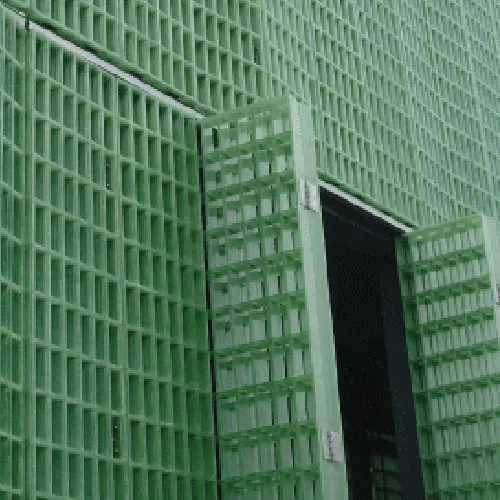loading...
- No. 9, Xingyuan South Street, Dongwaihuan Road, Zaoqiang County, Hengshui, Hebei, China
- admin@zjcomposites.com
- +86 15097380338
- Welcome to visit our website!
Innovative Designs and Applications of Metal Bar Grating for Structural and Safety Solutions
Metal Bar Grating An Overview of Its Applications and Benefits
Metal bar grating is a widely used structural component in various industries, known for its strength, durability, and versatility. Composed of metal bars arranged in a grid pattern, this product is designed to provide support while allowing the passage of light, air, water, and debris. The manufacturing process typically involves welding or swaging together a series of cross bars, creating a robust surface that can withstand significant loads and harsh environmental conditions.
One of the primary materials used in the production of metal bar grating is steel. Steel grating is preferred for its strength and resilience, making it suitable for applications that demand high load-bearing capacity. Galvanized steel, for instance, is treated with a protective coating that enhances its rust resistance, ensuring a longer lifespan even in the most corrosive environments. Stainless steel grating, on the other hand, offers superior corrosion resistance and is often utilized in food processing, pharmaceutical, and marine applications where hygiene is paramount.
Metal bar grating finds its applications in a wide range of sectors, including industrial, commercial, and municipal environments. In industrial settings, it is commonly used as walkways, platforms, and stair treads, providing safe access to equipment and elevated areas while maintaining visibility below. This transparency is beneficial in environments where spilled materials or stock piles need to be monitored.
In commercial settings, metal bar grating is often incorporated into storefronts, providing an aesthetically pleasing look while ensuring safety and security. Its durability and ease of maintenance make it an ideal choice for flooring in shops and public spaces. Furthermore, its ability to allow light and air circulation can contribute to a more comfortable environment for both customers and employees.
metal bar grating

Municipal applications of metal bar grating include drainage covers and grates for roadways and sidewalks. These grates play a crucial role in managing stormwater and preventing flooding, ensuring that debris is filtered while allowing water to flow freely. In parks and recreational areas, metal bar grating can be used to create walkways and observation decks, combining functionality with natural aesthetics.
The advantages of using metal bar grating extend beyond its strength and durability. The design allows for easy installation and customization, with various sizes and configurations available to suit specific needs. Additionally, the open design of bar grating reduces the accumulation of debris and facilitates quick cleaning, making it a low-maintenance option.
Safety is a paramount concern in any environment, and metal bar grating contributes to workplace safety in several ways. The slip-resistant surface, especially when fabricated with serrated bars, provides excellent traction, reducing the risk of accidents in both wet and dry conditions. Moreover, the load capacity of metal grating ensures that it can safely support the movement of personnel and heavy machinery alike.
In conclusion, metal bar grating is an essential component in numerous applications across various industries. Its combination of strength, durability, and versatility makes it a preferred choice for supporting structures, walkways, and drainage systems. As industries continue to evolve, the demand for reliable and efficient materials like metal bar grating will remain high, underscoring its importance in modern infrastructure and operations. Whether for heavy industrial use or commercial applications, metal bar grating provides a solution that meets the rigorous demands of safety and functionality.
-
Premium FRP Handrail for All ApplicationsNewsAug.29,2025
-
Low Maintenance FRP Mini Mesh Grating ProductsNewsAug.29,2025
-
Innovative FRP Square Tubes for Modern Industrial SolutionsNewsAug.29,2025
-
FRP Water Storage Tanks Wholesale Solutions for Bulk BuyersNewsAug.29,2025
-
FRP Molded Grating Solutions for Diverse Industrial ApplicationsNewsAug.29,2025
-
Construction Advancements Through FRP Pultruded ProfilesNewsAug.29,2025
-
Why Choose FRP Railings, Guardrails, and Handrail Systems?NewsAug.29,2025
